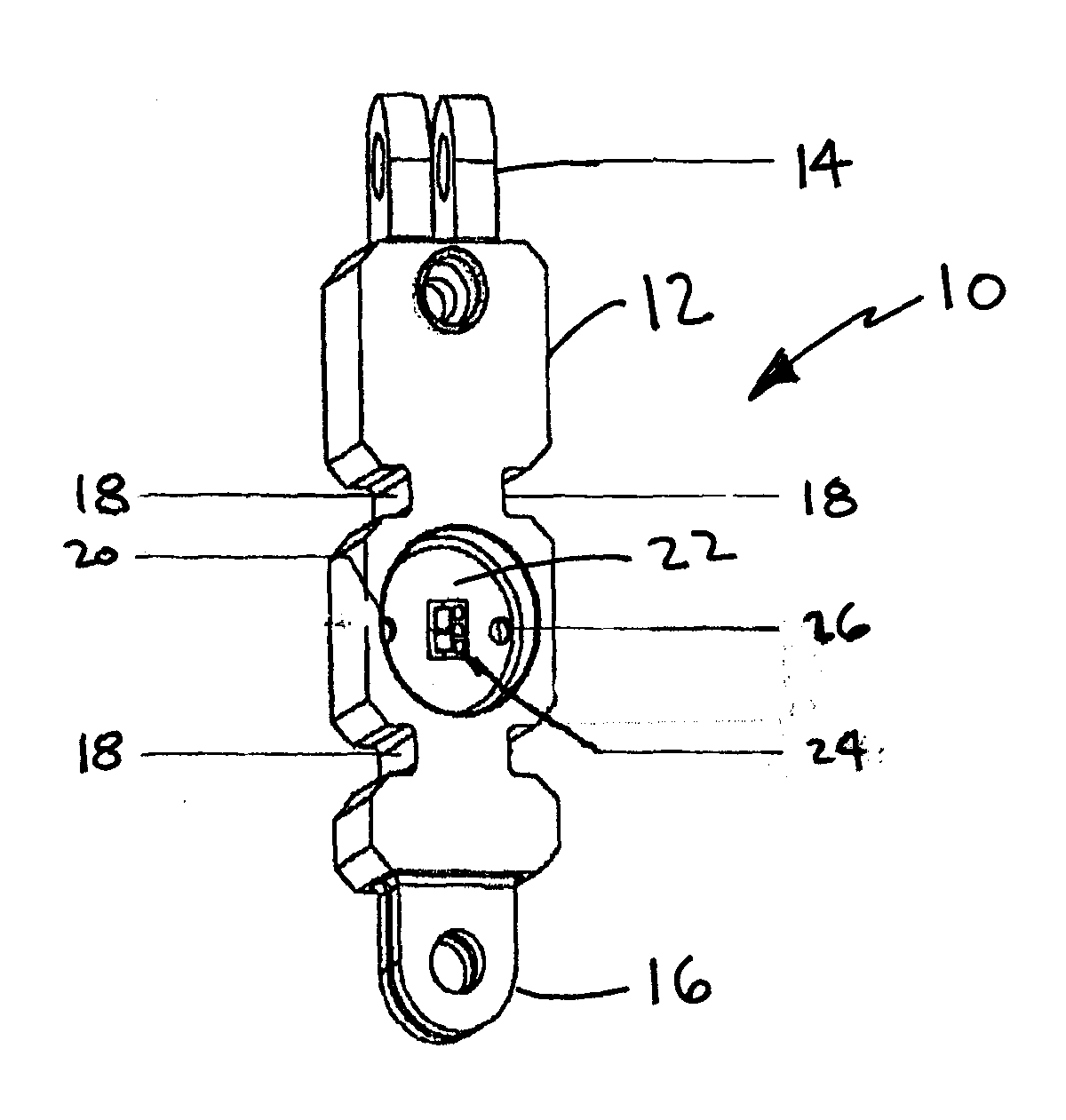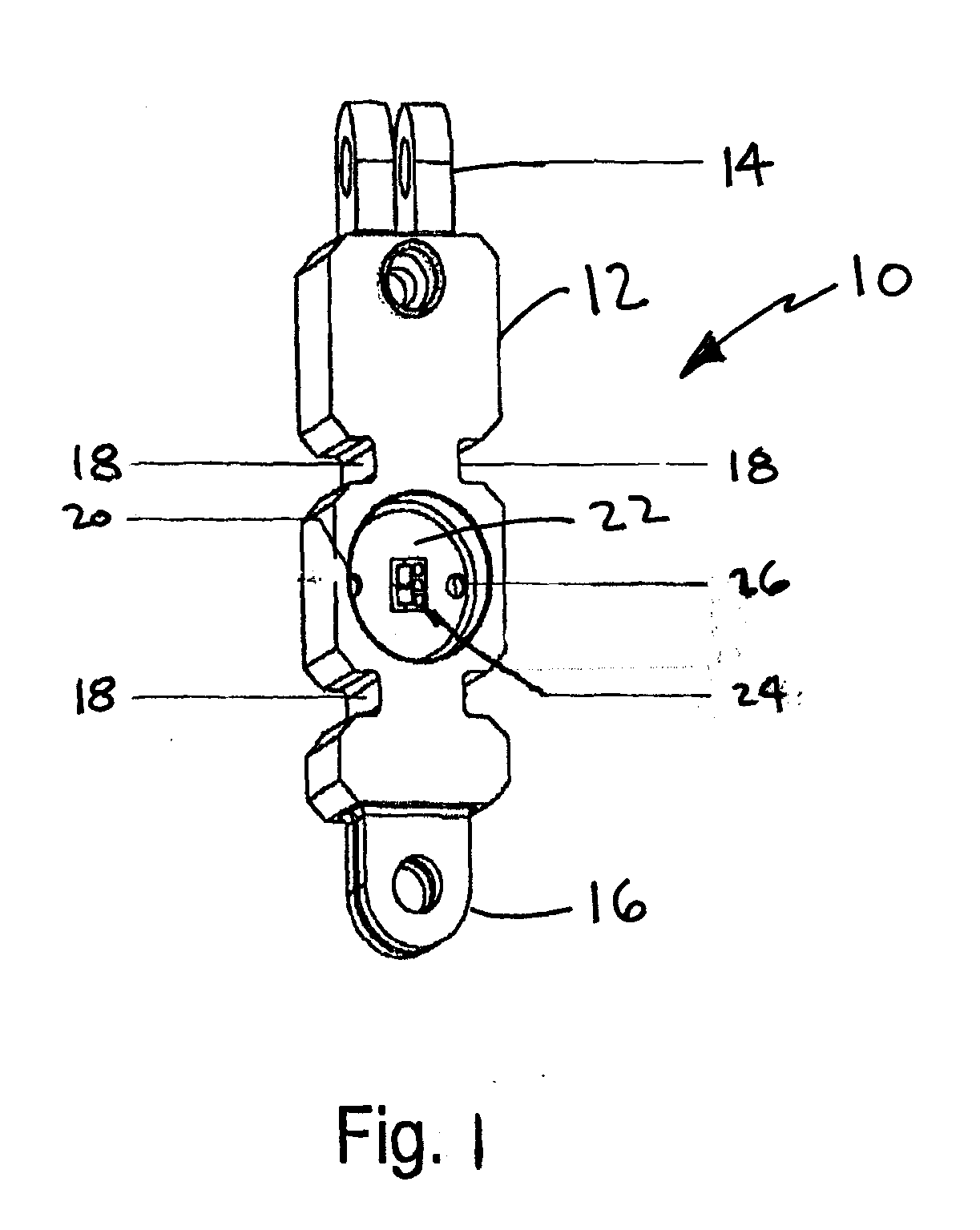Strain measuring device
a technology of strain measurement and measuring device, which is applied in the direction of force measurement, force measurement apparatus, force/torque/work measurement, etc., can solve the problems of difficult handling during manufacture, nonlinear, and semiconductor strain gages that introduce almost as many problems, so as to improve linearity and temperature transient behavior.
- Summary
- Abstract
- Description
- Claims
- Application Information
AI Technical Summary
Benefits of technology
Problems solved by technology
Method used
Image
Examples
Embodiment Construction
[0023]FIG. 1 shows an exemplary embodiment of a load cell 10 of the present invention. The load cell 10 is characterized by an elongate body 12, each end of which is adapted with a connector for receiving a roller chain. The notable feature of the connectors is not that their similarities, but is their difference. The first connector 14 is oriented to receive a roller chain portion in which the parallel pins that connect the links are oriented in a left to right axis across the plane of the drawing. The second connector 16 is oriented to receive a roller chain portion in which the parallel pins that connect the links are oriented in an axis coming normally out of the plane of the drawing. Described in another way, the load cell 10 and the connectors 14,16 at the ends thereof are in mutually orthogonal orientation. The load cell 10 is also characterized by four notches 18 that represent removed material from what would be an otherwise generally rectangular cross-section.
[0024] Mount...
PUM
| Property | Measurement | Unit |
|---|---|---|
| Poisson's ratio | aaaaa | aaaaa |
| tensile force | aaaaa | aaaaa |
| temperature transient | aaaaa | aaaaa |
Abstract
Description
Claims
Application Information
 Login to View More
Login to View More - R&D
- Intellectual Property
- Life Sciences
- Materials
- Tech Scout
- Unparalleled Data Quality
- Higher Quality Content
- 60% Fewer Hallucinations
Browse by: Latest US Patents, China's latest patents, Technical Efficacy Thesaurus, Application Domain, Technology Topic, Popular Technical Reports.
© 2025 PatSnap. All rights reserved.Legal|Privacy policy|Modern Slavery Act Transparency Statement|Sitemap|About US| Contact US: help@patsnap.com



